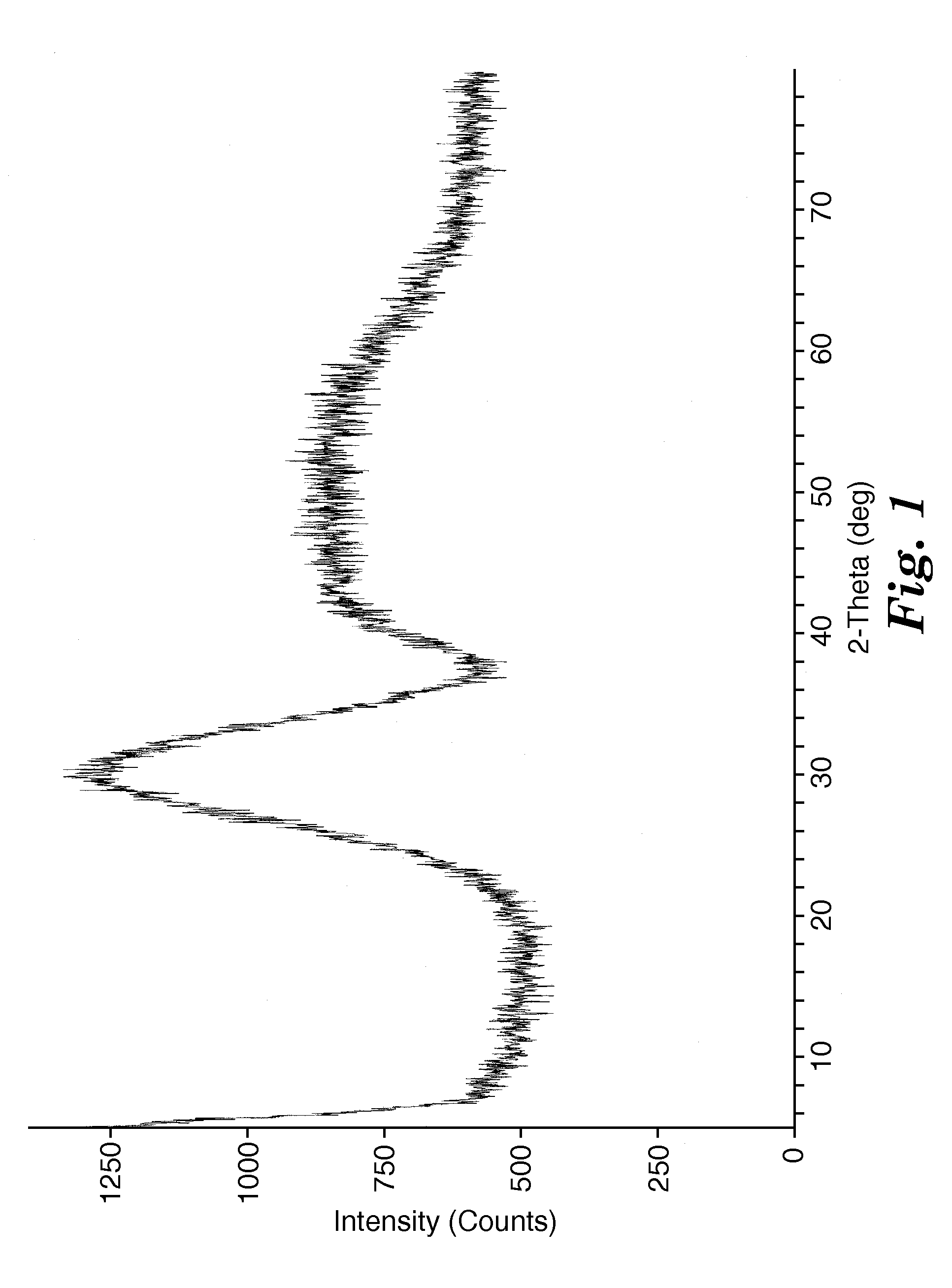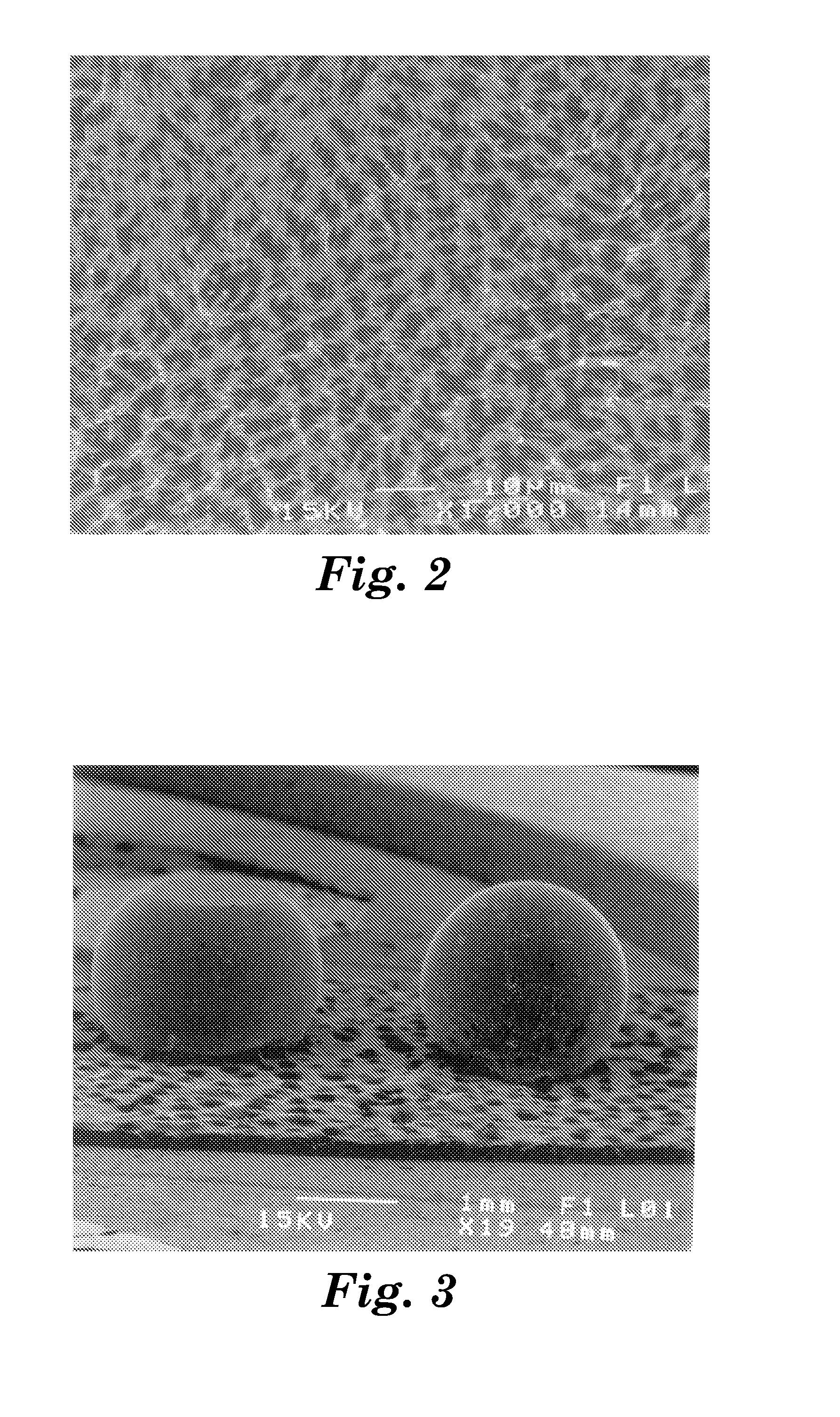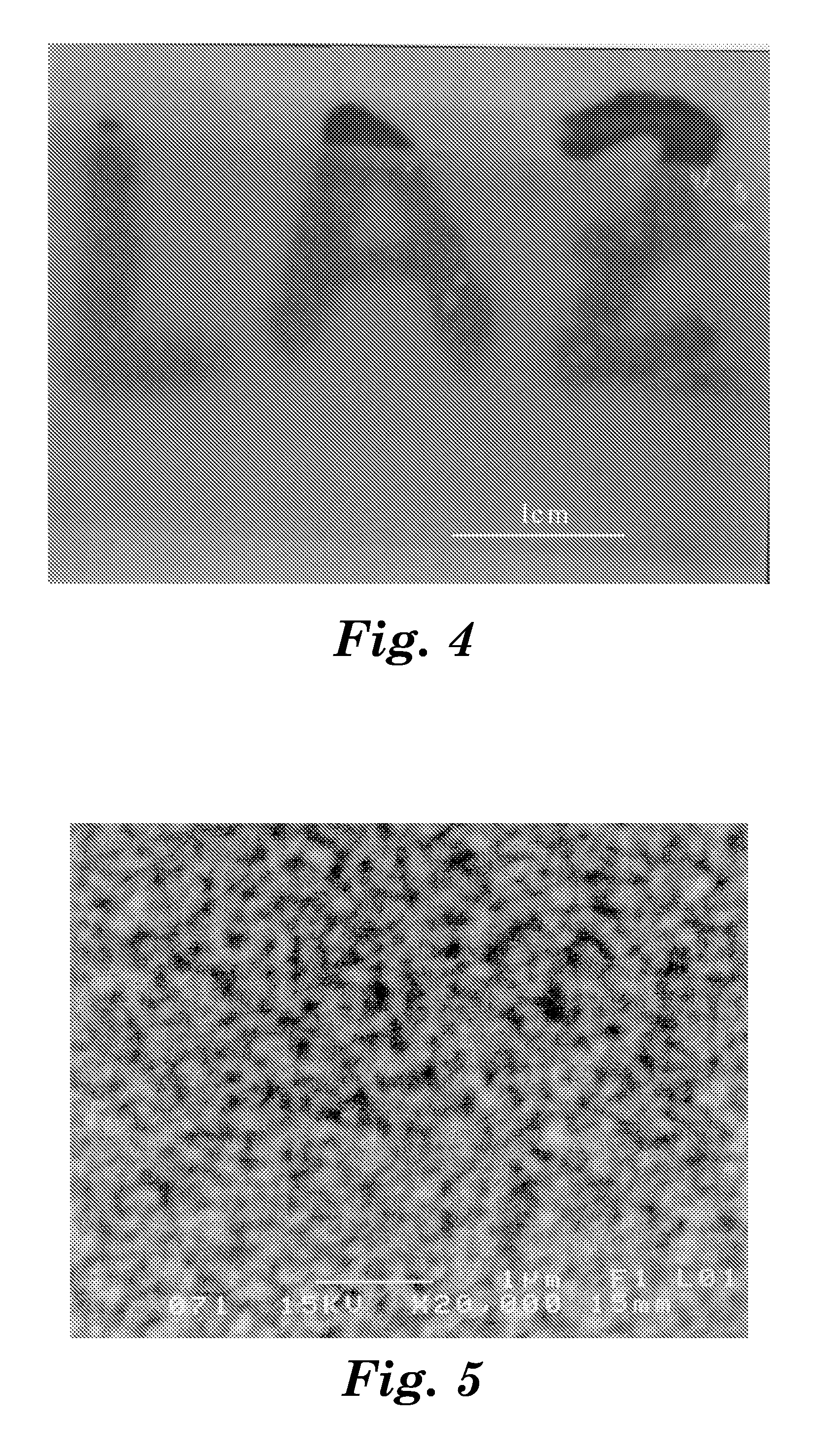Al2O3 -RARE EARTH OXIDE-ZrO2/HfO2 MATERIALS, AND METHODS OF MAKING AND USING THE SAME
a technology of rare earth oxide and materials, applied in the field of al2o3rare earth oxidezro2/hfo2, can solve the problems of limited mechanical properties of known glasses and glass-ceramics, limited young's modulus, hardness and strength, and inferior mechanical properties of glass and glass-ceramics
- Summary
- Abstract
- Description
- Claims
- Application Information
AI Technical Summary
Benefits of technology
Problems solved by technology
Method used
Image
Examples
example 1
[0164] A polyethylene bottle was charged with 132.36 grams (g) of alumina particles (obtained under the trade designation “APA-0.5” from Condea Vista, Tucson, Ariz.), 122.64 grams of lanthanum oxide particles (obtained from Molycorp, Inc.), 45 grams of zirconium oxide particles (with a nominal composition of 100 wt-% ZrO2 (+HfO2); obtained under the trade designation “DK-2” from Zirconia Sales, Inc. of Marietta, Ga.) and 150.6 grams of distilled water. About 450 grams of alumina milling media (10 mm diameter; 99.9% alumina; obtained from Union Process, Akron, Ohio) were added to the bottle, and the mixture was milled at 120 revolutions per minute (rpm) for 4 hours to thoroughly mix the ingredients. After the milling, the milling media were removed and the slurry was poured onto a glass (“PYREX”) pan where it was dried using a heat-gun. The dried mixture was ground with a mortar and pestle and screened through a 70-mesh screen (212-micrometer opening size).
[0165] A small quantity of...
example 2
[0169] Example 2 fused material was prepared as described in Example 1, except the polyethylene bottle was charged with 109 grams of alumina particles (“APA-0.5”), 101 grams of lanthanum oxide particles (obtained from Molycorp, Inc.), 9 grams of yttrium oxide particles (obtained from H.C. Starck, Newton, Mass.), 81 grams of zirconium oxide particles (“DK-2”), 0.6 gram of a dispersing agent (“DURAMAX D-30005”), and 145 grams of distilled water. The fused material obtained was transparent greenish glass.
[0170] Several Example 2 glass spheres were placed inside a furnace between two flat Al2O3 plates. A 300-gram load was applied to the top plate using a dead weight. The glass spheres were heated in air at 930° C. for 1.5 hours. The heat-treated glass spheres were deformed with large flat caps on both sides, illustrating that the glass spheres underwent viscous flow during the heating. Referring to FIG. 3, the arc-melted spheres are on the right, the deformed, heat-treated spheres on t...
example 3
[0171] Example 3 fused material was prepared as described in Example 1, except the polyethylene bottle was charged with 20.49 grams of alumina particles (“APA-0.5”), 20.45 grams of lanthanum oxide particles (obtained from Molycorp, Inc.), 9.06 grams of yttria-stabilized zirconium oxide particles (with a nominal composition of 94.6 percent by weight (wt-%) ZrO2 (+HfO2) and 5.4 wt-% Y2O3; obtained under the trade designation “HSY-3” from Zirconia Sales, Inc. of Marietta, Ga.) and 80 grams of distilled water. The fused material obtained was transparent glass.
PUM
| Property | Measurement | Unit |
|---|---|---|
| crystallite size | aaaaa | aaaaa |
| crystallite size | aaaaa | aaaaa |
| temperature resistant | aaaaa | aaaaa |
Abstract
Description
Claims
Application Information
 Login to View More
Login to View More - R&D
- Intellectual Property
- Life Sciences
- Materials
- Tech Scout
- Unparalleled Data Quality
- Higher Quality Content
- 60% Fewer Hallucinations
Browse by: Latest US Patents, China's latest patents, Technical Efficacy Thesaurus, Application Domain, Technology Topic, Popular Technical Reports.
© 2025 PatSnap. All rights reserved.Legal|Privacy policy|Modern Slavery Act Transparency Statement|Sitemap|About US| Contact US: help@patsnap.com



